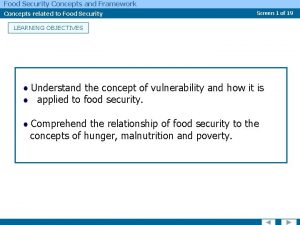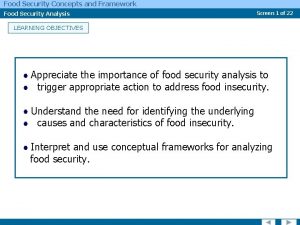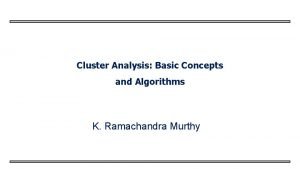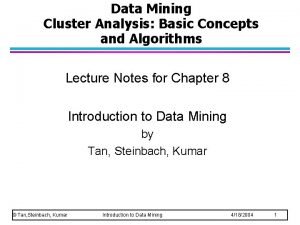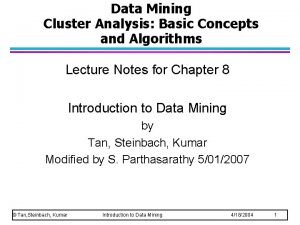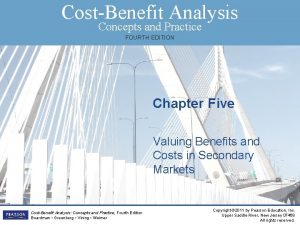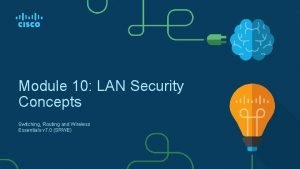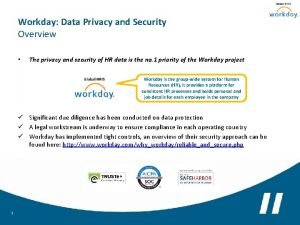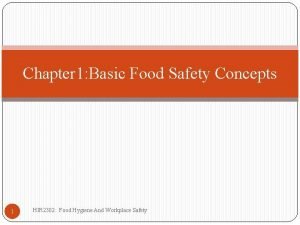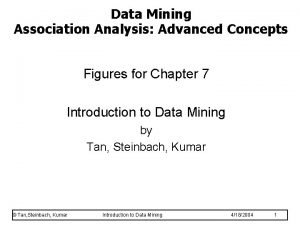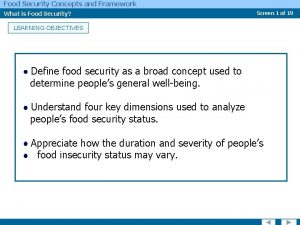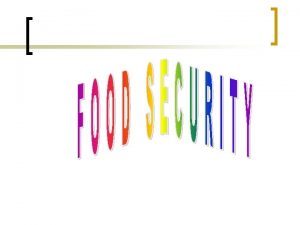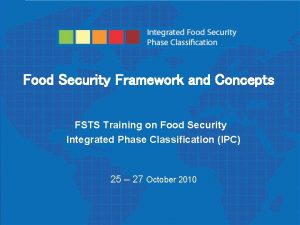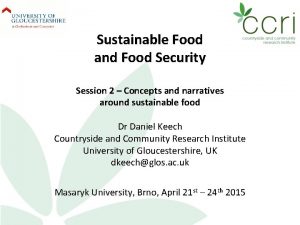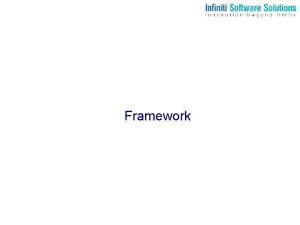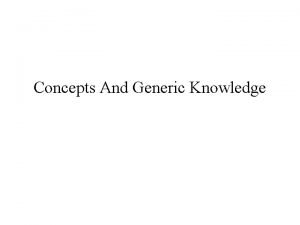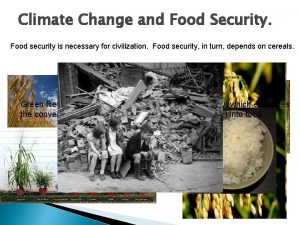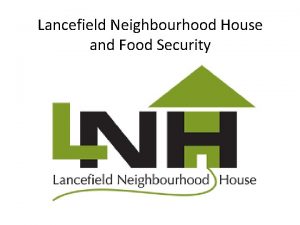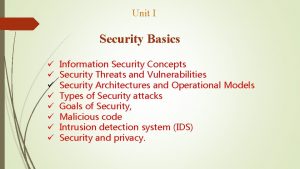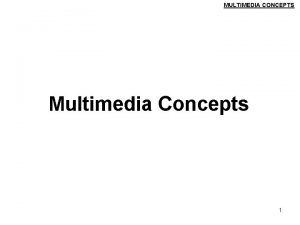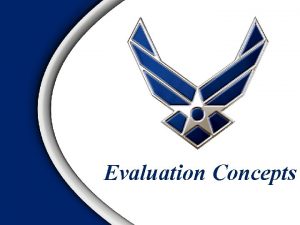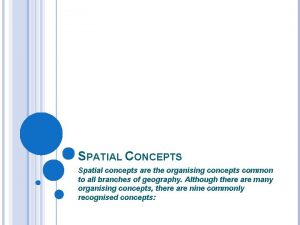Food Security Concepts and Framework Food Security Analysis






















- Slides: 22

Food Security Concepts and Framework Food Security Analysis Screen 1 of 22 LEARNING OBJECTIVES Appreciate the importance of food security analysis to trigger appropriate action to address food insecurity. Understand the need for identifying the underlying causes and characteristics of food insecurity. Interpret and use conceptual frameworks for analyzing food security.

Food Security Concepts and Framework Food Security Analysis Screen 2 of 22 INTRODUCTION This presentation introduces why food security analysis is important for decision-making in food security policy and program formulation and to trigger appropriate action.

Food Security Concepts and Framework Food Security Analysis Screen 3 of 22 THE JUSTIFICATION FOR ACTION A number of global agreements (e. g. 1996 World Food Summit, 2000 Millennium Summit) have set goals and specific targets for collective action in reducing the incidence of hunger and food insecurity. In reality there has been little progress towards achieving these targets. ! The widespread occurrence of food insecurity, the severity of the consequences and insufficient progress in reducing the numbers of the food insecure all point to the need for further urgent action.

Food Security Concepts and Framework Food Security Analysis Screen 4 of 22 THE JUSTIFICATION FOR ACTION Achieving development goals and targets set by major summits depends largely on the commitment and accountability demonstrated by governments. Commitment and accountability can be reinforced by international agreements, such as those on human rights. Specifically, the right to adequate food recognizes the basic human right of everyone to eventually be free from hunger.

Food Security Concepts and Framework Food Security Analysis Screen 5 of 22 FOOD SECUTIRY ANALYSIS What can, and should, be done? Decision-makers at all levels need accurate information on: • who is food insecure, • how many, • where they live, • why they are food insecure. They also need to understand the nature of the food insecurity: the duration and severity of the problem, and the vulnerability to future food insecurity.

Food Security Concepts and Framework Food Security Analysis Screen 6 of 22 FOOD SECUTIRY ANALYSIS In practice, measuring and analyzing food security is technically challenging. Data on various food security dimensions is still scarce and poorly integrated. Food security is a complex concept: no one indicator can adequately describe who is food secure and who is not. Hence, decision makers will need complementary and multiple methods to assess the incidence of food insecurity in different contexts.

Food Security Concepts and Framework Food Security Analysis FOOD SECUTIRY ANALYSIS Example of method Prevalence of undernourishment A widely-used indicator food insecurity is the head count of persons undernourished or deprived of food used by FAO. This estimate is made at the national level and is most useful for inter-country comparisons and measuring progress towards global hunger targets. However, it is less useful for developing detailed national food security policies and programs. It is a measure of energy deficiency (not enough food) and does not say anything about food quality Screen 7 of 22

Food Security Concepts and Framework Food Security Analysis Screen 8 of 22 FOOD SECUTIRY ANALYSIS Example of method: Household Food Economy The household food economy approach uses a model to estimate who is at risk of future food insecurity. The HFE method has mainly been used to assess food crises, where temporary shocks have left large numbers of people food insecure. It has not been widely applied to assess chronic food insecurity.

Food Security Concepts and Framework Food Security Analysis Screen 9 of 22 FOOD SECUTIRY ANALYSIS Example of method: Malnutrition assessments Nutritionists have several well-developed indicators of malnutrition. The main ones look at the nutrition of young children, and compare: • their height against age (‘stunting’), • their weight against height (‘wasting’), or • their weight for age (a combination of stunting and wasting). In addition there are specific indicator levels for deficits of the main micronutrients, including iron, vitamin A and iodine (also known as ‘hidden hunger’).

Food Security Concepts and Framework Food Security Analysis Screen 10 of 22 Malawi Vulnerability Assessment Committee (2006) FOOD SECUTIRY ANALYSIS The results of food security assessments are often presented geographically. Maps are useful to summarize: • the number and location of food insecure people; • the duration and severity of the problem; and • the estimated incidence of food insecurity. This information can then be used to…

Food Security Concepts and Framework Food Security Analysis Screen 11 of 22 FOOD SECUTIRY ANALYSIS …this information can then be used to: • advocate and raise awareness of the need for action; • gauge the severity of the problem and the urgency of response required; • determine the need for further detailed assessments; • target the available resources to those most in need; • monitor changes over time and adjust interventions accordingly; and • evaluate the impact of interventions.

Food Security Concepts and Framework Food Security Analysis Screen 12 of 22 CONCEPTUAL FRAMEWORKS In order to plan appropriate interventions decision makers need to appreciate why people are food insecure, by understanding underlying causes. Example For example, we may know that a certain population is malnourished. However, this information alone would not help to guide a decision on whether it is appropriate to improve: • food availability (e. g. by a food fortification campaign), • food access (e. g. by providing cash transfers), • care practices (e. g. by nutritional education), or • the health environment (e. g. through a vaccination campaign).

Food Security Concepts and Framework Food Security Analysis Screen 13 of 22 CONCEPTUAL FRAMEWORKS Frameworks are tools to improve our understanding of complex realities, processes and linkages, often through an illustration of these complexities in a simplified diagram. Different frameworks have been produced to help understand links among various food security dimensions, while also explaining linkages with underlying causes and outcomes, as well as related concepts and terms. A food security conceptual framework also presents itself as a useful tool for conducting food security analysis.

Food Security Concepts and Framework Food Security Analysis Screen 14 of 22 CONCEPTUAL FRAMEWORKS FAO-FIVIMS framework NATIONAL, SUBNATIONAL AND COMMUNITY LEVEL Socio-economic, Political, Institutional, Cultural and Natural Environment Food Economy (vulnerability context) Population Education Macro-economy including foreign trade Food Availability domestic production import capacity Basic services Market conditions Technology Climate Household Food Access Care Practices Stability weather variability price fluctuations political factors economic factors Child care Feeding practices Nutritional knowledge Food preparation Eating habits Intra-household food distribution Civil strife Household characteristics Livelihoods systems Social institutions Cultural attitudes and gender Access to Food poverty purchasing power, income, transport and market infrastructure INDIVIDUALS Household Livelihood Strategies, Assets & Activities food stocks, food aid Policies and laws Natural resources endowment HOUSEHOLDS Health and Sanitation Health care practices Hygiene, Sanitation Water quality Food safety & quality Food Consumption Energy intake Nutrient intake Consumption Status Nutritional Status Food Utilisation by the Body Health status

Food Security Concepts and Framework Food Security Analysis Screen 15 of 22 CONCEPTUAL FRAMEWORKS Causality model of malnutrition (originally developed by UNICEF in 1990)

Food Security Concepts and Framework Food Security Analysis Screen 16 of 22 CONCEPTUAL FRAMEWORKS The standard food security conceptual framework draws on the idea of a hierarchy of needs. The assumption is “food first” where food security is a primary need that supersedes other human needs. However, evidence on people’s behaviour is challenging this assumption. It is increasingly recognized that protecting food intake, especially in the short-term, is only one objective that people pursue.

Food Security Concepts and Framework Food Security Analysis Screen 17 of 22 CONCEPTUAL FRAMEWORKS The sustainable livelihoods framework (originally developed by DFID)

Food Security Concepts and Framework Food Security Analysis Screen 18 of 22 CONCEPTUAL FRAMEWORKS Livelihoods frameworks have contributed to understanding the ways in which people strive to protect livelihoods as central to understanding food crises. People’s vulnerability to food insecurity and their coping mechanisms to deal with the hazards they face, have become key points of interest. The bottom line is a view of food security that focuses on the longterm viability of the household.

Food Security Concepts and Framework Food Security Analysis Screen 19 of 22 CONCEPTUAL FRAMEWORKS Any conceptual framework is a simplification of reality. Each framework brings important and differing aspects of food security analysis to the fore. The frameworks vary in what they highlight. They also vary in their complexity. Despite the differences these frameworks have much in common: they recognize the many causes of the problem, the multiple ways that these may interact in specific circumstances and the heterogeneity of the problem.

Food Security Concepts and Framework Food Security Analysis Screen 20 of 22 CONCEPTUAL FRAMEWORKS Issues which lead to food security of households and individuals in countries are numerous and span a range of sectors. Each factor impacts on household and individual food security in different ways. The relative importance of these factors in determining food security varies across households, locations and over time. A well defined conceptual framework is critical for: • identifying appropriate entry points for the design of interventions; and • assisting in the interpretation of food security indicators.

Food Security Concepts and Framework Food Security Analysis Screen 21 of 22 SUMMARY Achieving food security for all at all times remains a major global challenge. Where food insecurity problems remain, there may be severe consequences. Concerns over food insecurity and hunger have generated global debate and have resulted in well-defined political commitment to reduce food insecurity through agreed-upon targets. However, progress has been disappointing. Improved food security information and analysis can accelerate progress: Firstly, it is important to measure the incidence and nature of food insecurity; this information helps prioritize action to address food insecurity, target interventions and monitor progress; however, measurement is technically challenging and great care is needed in selecting and interpreting indicators. Secondly, it is important to understand the causes of food insecurity; you should now understand how various conceptual frameworks – specifically the food security, malnutrition and sustainable livelihoods frameworks – can help with this analysis; an understanding of the underlying problems is a first step in selecting appropriate interventions.

Food Security Concepts and Framework Food Security Analysis Screen 22 of 22 IF YOU WANT TO KNOW MORE. . . Online resources DFID (1999). Sustainable Livelihoods Framework. In: Sustainable Livelihoods Guidance Sheets (Section 2) www. livelihoods. org/info_guidancesheets. html FAO (2006) The State of Food Insecurity in the World. Eradicating world hunger – taking stock ten years after the World Food Summit. FAO, Rome. www. fao. org/sofi/ FAO Right to Food Lesson www. fao. org/righttofood/. Additional reading FIVIMS (2000) Guidelines for National FIVIMS. Background and principles. UNICEF (1990) Strategy for Improved Nutrition of Children and Women in Developing Countries. UNICEF, New York FAO (2003) FAO Methodology for the Measurement of Food Deprivation, FAO Statistics Division, FAO, Rome.
 Food security concepts and frameworks
Food security concepts and frameworks Food secutiry
Food secutiry Private securty
Private securty What is theoretical framework
What is theoretical framework What is food safety
What is food safety Association analysis: basic concepts and algorithms
Association analysis: basic concepts and algorithms Cluster analysis basic concepts and algorithms
Cluster analysis basic concepts and algorithms Cluster analysis basic concepts and algorithms
Cluster analysis basic concepts and algorithms Cluster analysis basic concepts and algorithms
Cluster analysis basic concepts and algorithms Cluster analysis basic concepts and algorithms
Cluster analysis basic concepts and algorithms Cluster analysis basic concepts and algorithms
Cluster analysis basic concepts and algorithms Cost-benefit analysis concepts and practice
Cost-benefit analysis concepts and practice Module quiz - lan security concepts
Module quiz - lan security concepts Workday soc 1
Workday soc 1 Dispositional framework vs regulatory framework
Dispositional framework vs regulatory framework Conceptual framework maker
Conceptual framework maker Theoretical framework
Theoretical framework Dispositional framework vs regulatory framework
Dispositional framework vs regulatory framework Theoretical framework example
Theoretical framework example Unit 2 food food food
Unit 2 food food food Grazing food chain diagram
Grazing food chain diagram Food safety concepts
Food safety concepts Association analysis advanced concepts
Association analysis advanced concepts
